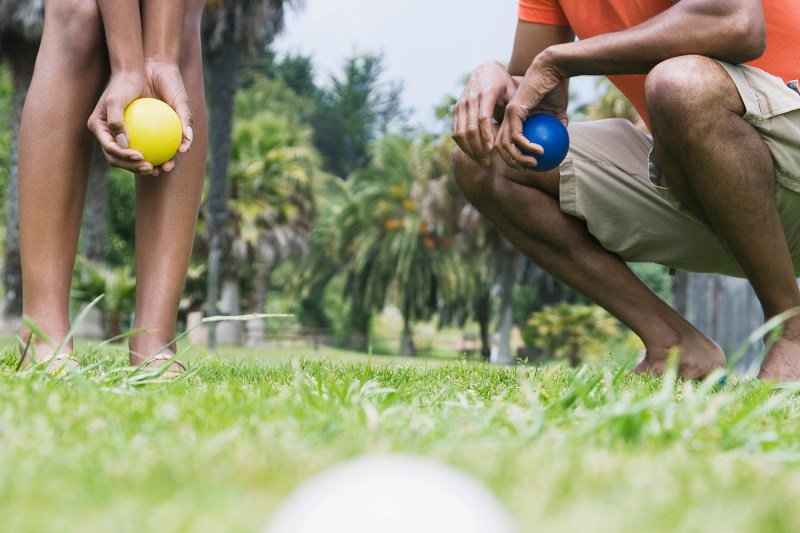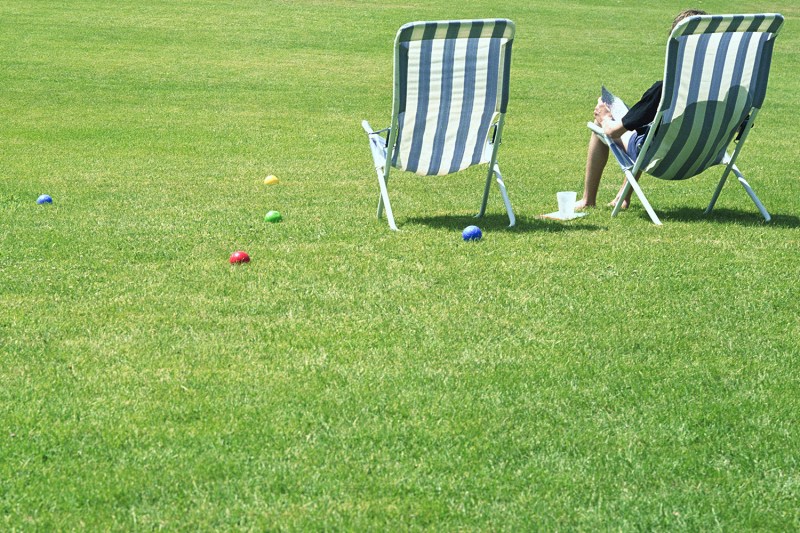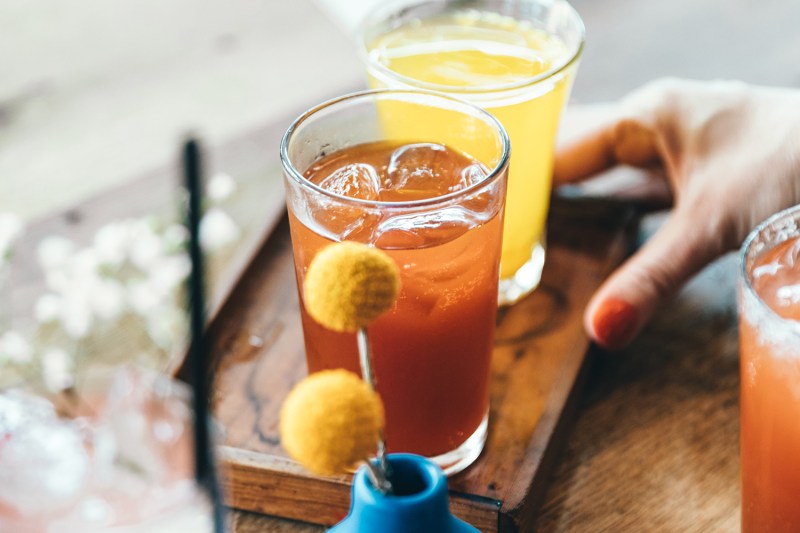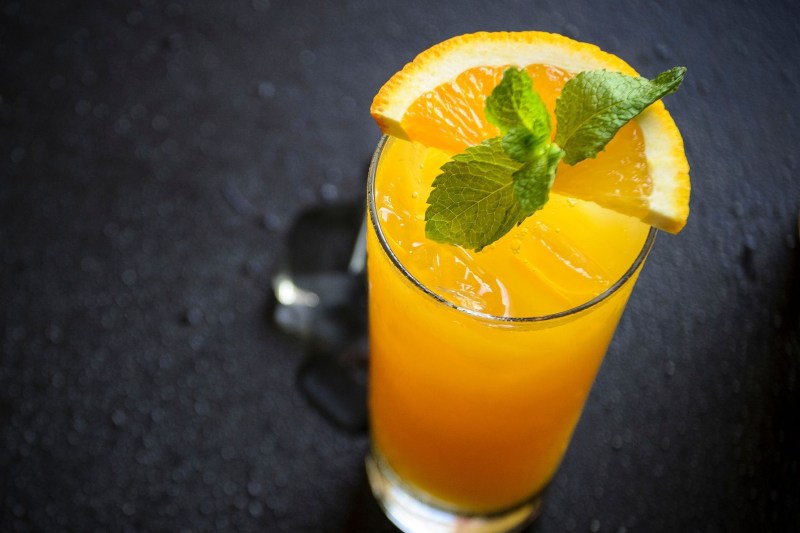Although we’re still fully in the throes of pandemic-required social distancing, it’s likely that, with a lot of caution and discretion, we’ll be able to start welcoming a friend or two back to our homes for a couple of drinks, a snack, and a much-needed catch-up in the near future. And if you instead opt to continue quarantining with your families, significant others, and/or roommates, then maybe it’s worth thinking about finding ways to maximize the beautiful spring and summer weather, even if you’re restricted to your own backyard.
Bocce ball, a long-time favorite among retirees, has experienced a recent resurgence, with bars in major metropolises like NYC, Chicago, and Los Angeles setting up bocce courts in their backyards and courtyards for patrons to enjoy. Good thing, you can build your own bocce set-up at home as long as you have a reasonably flat lawn and a bit of determination. With a finished court and only a few carefully chosen snacks and refreshing cocktails, you’ll have the makings of a full-fledged backyard bocce party, even if the guest list just includes the folks living under your roof.
What Is Bocce Ball?
First brought to the United States during the Italian immigration rush at the turn of the 20th century, bocce ball can be played with as few as two players. The game takes place on a bocce court, or a bordered area filled in with sand or soil.

To kick things off, one player throws a “jack” (a small ball), which becomes the target ball. Then, the other players take turns tossing their larger balls, with the goal of landing their balls as close to the jack as possible without knocking the jack out of place. Players (or teams) rack up points for landing their balls closer to the jack than their opponents, and the highest-scoring player/team takes the win at the end of the match.
Choose an Area That is Completely Flat
Bocce courts aren’t complicated to put on a lawn, but you’ll want to prioritize a level area. “For a bocce ball court to function properly, it has to be perfectly flat. This might require walls, or just filling in the divots,” says co-founder and head designer Blythe Yost of Tilly landscape design.
Pay Attention to the Position of the Sun and your Lighting Setup
“When thinking about building your court, you may want to think about the sun,” Yost cautions. “You ideally don’t want to be throwing [your bocce balls] into it, so it may be smartest to place [the court] on the north-south axis.”
If you want to keep your bocce game going after the sun sets, consider picking up some “dimmable LED string lighting perfect for a post-dinner game. Hang them across the court, so you can play the night away,” advises restaurateur and designer Randi Lee of the soon-to-open Leland Eating and Drinking House in Brooklyn.
Benefits of a Bocce Court Border
Because bocce relies on clear court boundaries (you need to keep the balls from rolling all over your yard, after all), a proper backyard court must include discrete borders. “A secured/staked-down border is necessary for containing the court’s material. The most common is 4 by 4 pressure-treated lumber. Cedar timbers give more of a traditional Italian look, and steel edging is the most fancy,” explains Geoff di Girolamo, architect, and partner of Surfacedesign in San Francisco.

But bocce court borders don’t need to be strictly utilitarian. With a bit of imagination and planning, you can transform these boundaries into fully functional (and small party-perfect) seating areas. “Because bocce is social, a 3 by 4-foot occupiable border helps finish the court. This can be stones/pavers or decomposed granite, if [you’re] integrating the court into a garden setting. [For] extra credit, [you can] use a weatherized wood storage container as a side-table for drinks, which have evolved over the past decade or so from older men drinking Italian jug wine while playing bocce to higher-end varietal pairings preferred by younger professionals,” di Girolamo suggests.
All you Need to DIY Your Bocce Court
Bocce courts do require a bit more construction skill than volleyball nets or cornhole boards, but Blythe Yost assures us that a simple and highly functional bocce set-up can be accomplished without professional assistance. “[To make a bocce court in my backyard,] I would construct a frame out of 2-foot by 6-foot lumber and set it level on the ground. I’d fill it in with stone dust using a tamper every 2 inches to get a compacted surface,” Yost says.
Bocce court borders don’t need to be strictly utilitarian. With a bit of imagination and planning, you can transform these boundaries into fully functional (and small party-perfect) seating areas.
In terms of the difficulty level for a beginner, Yost tells The Manual that “a lot of [the difficulty] depends on how sloped your property is to begin with. If it’s not too steep and you’re comfortable with a little carpentry, this is very doable!” Of course, if you have a hilly lawn and still want to play bocce at home, you may be better served by calling in some pros.
Now for the most important question: What should you serve at a bocce-themed backyard micro-fête? Keeping your guest count (extremely) low gives you more room for experimentation than you might otherwise have with a party menu, so you can really dive into bocce’s Italian heritage and come up with an array of excellent finger foods and harmonious cocktails.
Your Bocce Bar
Lean into Bocce Ball’s Italian Heritage with a Menu of Antipasti
When it comes to a snack spread with an Italian accent, one concept seems more relevant than any other: Antipasti, the classic Italian assortment of meats, cheeses, olives, and marinated vegetables. That’s where Randi Lee’s mind goes first when he’s pondering a menu for a bocce competition: “Italians love snacks … as do I. Grissini wrapped in prosciutto? Bruschetta? Arancini? How about a pickle plate of onions, peppers, and ramps with fresh bread? Any antipasti will work for me. Marinated artichokes, charcuterie plate, Parmesan with honey and aged balsamic, marinated sardines, or fritto misto. Anything salty to go with my vino Italiano,” Lee insists.
Executive chef Brandon Boudet of Little Dom’s in Los Angeles agrees with the need for antipasti during a bocce showdown, telling us that “for snacks, a various array of bruschetta with lots of different seasonal toppings and great bread [is key]. For example, English pea with fresh mint and ricotta puree.”
Planning Your “Bocce Bar” Beverage Lineup
Of course, a selection of Italian wines and maybe a case of Peroni make appropriate pairings for an antipasti platter. But if you want to roll up your sleeves and stretch your bartending muscles, then expand your mind to consider seasonal cocktails.

Founders Jess Blakely and Willow Sprague of BarBees mobile bartending in Nashville like to use fresh-grown citrus and garden herbs in their spring and summer cocktails: “Blood orange and citrus are some of our favorite spring flavors! We also love using different herbs for our BarBees honey simple syrup that we use to sweeten our cocktails. Basil, rosemary, and thyme are some of our favorites! They taste and smell so fresh and make us think of warmer weather.”
Brandon Boudet especially enjoys the use of oroblanco, a Californian citrus plant that’s in season during the spring, in his refreshing outdoor libations. “I’m a big fan of oroblanco (a sweet seedless citrus hybrid fruit that’s basically a pale white grapefruit). In drinks, you can mix the juice into a gin and tonic, with fresh mint or with some vodka, and top off with some sparkling water. That’s really the way to go for springtime,” Boudet explains.
For a very Italian cocktail directly inspired by bocce, try this amaro-based sipper:
Bocce Bitterino Cocktail Recipe

(By Adam Levy & Amanda Schuster, founder and senior editor, The Alcohol Professor)
“To sip while playing bocce, you want something that’s slightly bitter, sleek, and refreshing, but not too fussy to prepare and doesn’t get splashed around too much,” Adam Levy and Amanda Schuster of The Alcohol Professor offer up as valuable guidelines. With these principles in mind, they’ve devised a libation that fits the following criteria: “A perfect Italian cocktail is about flavors, but also textures, providing the ultimate sensual sipping experience. It’s cold, it’s a little bitter, a little sweet, and slightly tart. We love a refreshing splash of cold sparkling wine like Prosecco or even Lambrusco with aperitivos and digestivos to perk things up, as well some fresh fruit — berries or citrus or both. Gotta have some sparkling wine chilled in the spring and summer at all times, especially to add to cocktails!”
Ingredients:
- 1.5 oz amaro of choice (Levy and Schuster recommend Ramazzotti, Lucano, Averna, Meletti or Varnelli Sibilia)
- .25 oz amaretto
- 4 fresh raspberries
- 1 orange wedge
- Bubbles, to taste (Levy and Schuster recommend tonic water, sparkling water, Prosecco, or a combination of several sparkling ingredients)
Method: In a Collins or another tall glass (or a plastic lawn glass), muddle the raspberries. Add the amaro and amaretto and stir to combine. Squeeze the orange juice into the drink and drop in the wedge. Fill glass with ice and top with the bubbles.



